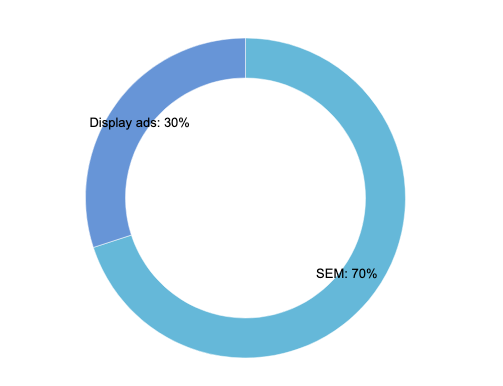When people search using Google or another search engine, they usually focus on the first page of results. In fact, that’s a bit of an understatement. Research shows a tiny 0.63% of users click through to the second page. Clearly, if you want your customers to find you, you need to be on page one.
Search engine marketing (SEM) is one way to get there. Unlike search engine optimisation (SEO), which uses keywords and content to lift your rank organically, SEM uses paid ad placements at the top of the search engine results page (SERP).
Get it right, and SEM can be an effective way to reach new customers, build brand awareness and boost conversions. Research shows that for every $1 invested in SEM, businesses get an average return of $2.
RELATED: The small business guide to investing in good SEM.
What is ‘SEM’?
SEM, or Search Engine Marketing, refers to a set of digital marketing tools, techniques and strategies used to boost your business’s online presence, driving leads, sales and brand awareness.
The most common form of SEM involves you paying to own the keywords that customers use when searching online for a business like yours. By owning these keywords, your business will appear at the top of the search engine results page (SERP) when those keywords are used in a search.
Get it right, and SEM can be an effective way to reach new customers, build brand awareness and boost conversions. Research shows that for every $1 invested in SEM, businesses get an average return of $2.

We carried out a poll in 2023 asking ‘What drives more leads to your business?’.
A whopping 70% of people responded that SEM is the main driver, while only 30% responded display ads.
Fast, affordable, effective.
We’ve all seen paid search ads. They’re the listings at the top of the SERP, usually with a ‘sponsored’ tag. These appear based on keywords the business sets, so ads pop up in front of the right audience at the right time. Depending on the chosen format, these ads can also appear as ‘shopping’ ads, with images and links to specific products.
Essentially, paid search lets you skip the queue to the top of the Google rankings, quickly boosting clicks and conversions. SEO, by contrast, can take months to ramp up. SEM is also a useful way to boost specific products or services. You can zero in on an audience already interested in your product or service category, so it’s easier to get customers across the line.
Another plus? SEM is surprisingly affordable. It’s sometimes called pay per click (PPC) because businesses pay based on the number of customers who click on their ads, not who view them. This means you’re paying for concrete results.
Right audience, better results.
How do you ensure your paid search ads get in front of the right people? It’s all about providing relevant browsing experiences for customers and optimising your site for a seamless user journey.
1. Keywords are key.
SEM campaigns start with extensive keyword research, which helps you focus on the search terms your competitors are using and the right keywords for your current campaign. You can use Google’s tools to do this or try a keyword research tool.
Once you have your keywords, you’ll need to bid on them. Your business sets a maximum cost-per-click for your specific keywords or categories. When a user searches the keyword, the ad platform will place brands with the highest bids at the top of the results page. If this sounds complicated, the Google platform will suggest a bid for you.
2. Search retargeting.
Search retargeting uses past browsing and search behaviour to inform ad placements. Once a user searches for your product or uses set keywords, they become part of your custom audience. That audience then receives ad content relevant to their search. For example, if they searched for hair care advice, they might see your ads for hair care products popping up on social media or other sites.
3. Landing page optimisation.
According to Google, SEM best practice requires a dedicated landing page for each product or service. If a customer clicks through from your ad, they’ll see a relevant page with key details, not just your site’s front page. A landing page can help boost your Google quality score and generate leads at the same time – just make sure to include a contact form or sign-up page to capture potential customers’ information.
RELATED: 5 easy ways to improve your Google Ad Quality Score (QS).
Want to supercharge your SEM? Talk to the experts at Yellow Pages about a targeted SEM campaign that puts you in front of customers fast. Find out more here.
